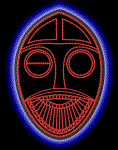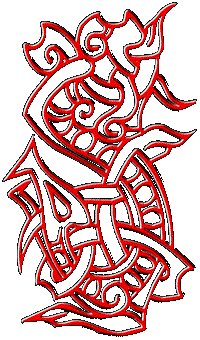 | ||
 | ||
|
|
The Notes found within the Runes section of This web site are available as a download able file by clicking the bar above. This file includes worksheets that may be printed and photocopied by teachers for use in schools. The file is a Rich Text Format (.RTF) which has been “zipped” to reduce it’s size can be opened in most word-processors allowing you to edit the materials for you own use. Using Viking Runes in the Classroom Because Runes lack the full sound range of our modern alphabet they can be used to increase a child’s awareness of spelling and phonetics. For example look at the simple joke below, Knock Knock: Who’s there? King Knut, Well dry your feet when you come in then. In the Late Viking Age “Younger Runes” this might look like: |
( nok nok: hus theR: king knut: uel dri uR fet uen u com in then ) | |||||
The spelling is very different from modern English but the sound values are close enough to be understandable. In case you are wondering about the joke, Knut is often translated as Canute and in the popular story is the foolish King who told the sea not to come in and got his feet wet. In reality Knut was one of the first Christian Kings of the Vikings, and ruler of England, Denmark, Norway and Sweden by 1030 CE. The story goes that Knut was so fed up with his courtiers, who thought there was nothing beyond the King’s power that he did indeed go to the beach and order the tide to stop. When the sea rose and soaked the feet of the king and his courtiers, he then explained that there was a king more powerful than him, and that was the King of Heaven. The story above is a good example of how stories get confused and misunderstood with the passage of time. The Work Sheets in the RTF file contain the 20 Rune Late Viking Futhork and ask the children to notice which sounds are missing (cjqvwxyz) and which sounds are extra (th, R) {“r” is the sound at the beginning of “river” and “R” is the sound at the end}. You can then discuss which sounds could be used to replace the missing sounds in some cases ( k-c or s-c, u-w, ks-x or gs-x, i-y, s-z for “egsample” ). All of the above help to reinforce knowledge of the alphabet, spelling and phonetics. The children are asked to translate the knock knock joke above. This means they have to work out or vocalise the sounds to understand the phrase. You could then tell both versions of the Knut / Canute story, discuss how stories change with time and how some often have elements of truth in them. Next we ask the children to write their own name and address in runes using the knowledge they have gained so far. Lastly we get the Children to compare runes with modern writing. What do they notice about the Runes themselves? ( straight lines and dots. always up and down or at an angle, never horizontal ) You can explain that runes were used to scratch on wood and how horizontal lines might be confused with the grain. Modern letters are for use with a pen or pencil on paper and curved lines work much better on such media. | |||||
| [Living History] [Resources] [Services] [Whats New] [Contact Me] [Links] [Guestbook] [<©>] |
 | ||||||||||||
 | ||||||||||||
